
If you are in Udaipur for few days, it's highly recommended to plan a day trip to Chittaurgarh where Chittor Fort is located. Chittaurgarh also has decent hotels and resorts in case you want to stay there and enjoy the place at ease. Through this blogpost we will share about some of the main places to explore inside Chittor Fort.
Before we start talking about main places to explore inside Chittor Fort, let's understand some basic details like timings to see the fort, ticket fees, travel guides and knowing that personal cars are allowed inside the fort to move between the places as every place is quite far.
Timings of Chittor Fort, Rajasthan :
9am-6pm is timing of Chittor Fort and at any point of time it's worth to check details on ASI website about timings and holidays. I am sure you don't want to be surprised after reaching Chittaurgarh that Chittor Fort is closed on that day.
Entry Ticket Fees for Chittor Fort, Rajasthan :
Entry ticket cost for Indian tourists at Chittor Fort is 40 Rs per adult.
Entry ticket cost for Indian tourists at Chittor Fort is 30 Rs for kids.
Entry ticket cost for non-Indian tourists at Chittor Fort is 250 Rs per adult.
Latest ticket price can be checked on ASI website.
Travel Guides at Chittor Fort, Rajasthan :
Ideally one should have a guide while exploring Chittor Fort as there is so much history associated with it. Without a guide you may not be able to appreciate the architecture, events and other important changes in Mewar dynasty.
At the same time it's important to find a guide who is knowledgeable and show everything with patience. Is it easy to gauge? May be not, but be sure that you negotiate all your requirements in advance and go for ASI certified guide. At times you may get surrounded by local kids who may offer the tour at lower price. Usually that should not be encouraged and they may not be allowed to visit all the places with you.
You can have a guide at Chittor Fort for approx 650 Rs for whole tour. Guide takes you to different places during your exploration at Chittor Fort. Our Guide was pretty good and Manish is reachable at 9783246246. Recommended if you are visiting Chittor Fort and intend to accompany a guide. If you explore Chittor with Manish, please leave your comments below with experience and let us know if you would want to recommend him to others from Travellingcamera family?
Are personal vehicles allowed inside Chittor Fort, Rajasthan? :
Yes, you can take your vehicle inside the fort and explore Chittor fort in your vehicle. There are various parking slots around main areas of interest inside Chittor Fort.
Day Trip from Udaipur to Chittor Fort :
One can plan a day trip from Udaipur to Chittor Fort. Chittorgarh from Udaipur is approx 120 km which takes 2 hrs one side. Please note that day trip means 2 hrs of drive, so personally I would recommend staying around Chittorgarh and give at least full day to Chittor Fort as there is so much to explore and photograph. There can multiple factors to consider as per individual choice to decide day trip to Chittor from Udaipur or stay around the fort.
Main places to explore inside Chittor Fort :
1. Kumbha Palace
2. Meerabai Temple
3. Vijay Stambha
4. Kirti Stambha
5. Padmini Palace
6. Samathishwara Temple (Shiva Temple)
7. Gaumukh Reservoir

Kumbha Palace in Chittor Fort, Rajasthan :
Let me start by saying that Chittor Fort is a must visit place when you are in Udaipur region of Rajasthan State in India. There are multiple reasons behind saying that and the most obvious being that Chittor Fort is India's largest fort. Other reason is that Archeological survey of India has maintained this UNESCO World heritage site pretty well. Chittor fort is huge so in this blogpost we will know and explore Rana Kumbha Palace.
One can plan a day trip from Udaipur to Chittor Fort. Chittorgarh from Udaipur is approx 120 km which takes 2 hrs one side. Please note that day trip means 2 hrs of drive, so personally I would recommend staying around Chittorgarh and give at least full day to Chittor Fort as there is so much to explore and photograph. There can multiple factors to consider as per individual choice to decide day trip to Chittor from Udaipur or stay around the fort.
Above photograph is clicked when we were exiting from Zanana Mahal of Rana Kumbha Palace and there are some very interesting facts associated which clearly differentiate zanana mahal from king's palace.
There are stairs going down from Zanana Mahal of Rana Kumbha Palace. Manish (our guide) showed us the place and shared the story associated. Rani along with other women from Zanana mahal used to take those stairs to enter a cave which used to take them to a water pond for morning bath. This water tank is close to the famous Shiva Temple of Chittor Fort. After bath in water pond, queen used to visit Shiva temple before coming back to the Palace. This Shiva temple is also referred in Padmavat bollywood movie. We will do a sperate blogpost on this Shiva temple, water pond and a compound which has the famous Vijay Stambha.
There is pretty long drive from very first gate of the Chittor Fort till the ticket counter. This road is surrounded by strong walls of Chittor fort. Ticket counter is managed by Archeological Survey of India and now there is also an option to buy the ticket online on ASI website. Although there is a weird thing in Chittor Fort that still want you to queue up and note down your details & hand over a small hand-written slip which is asked during the entry to Padmini Palace. While online ticket works very well in Kumbalgarh Fort and you don't need to queue up again.

There is no special entry fees for Rana Kumbha Palace. There is only one entry ticket for whole Chittor fort and Rana kumbha Palace is part of that. Entry ticket for Chittor Fort costs you 40rs per adult, while online ticket cost is 35 rs. There is no extra cost for vehicle and best part is that you can take your vehicle inside. Going in a vehicle is must as it's huge and vehicles makes it easy to move between the places of Chittor Fort. We were there during pandemic so comparatively it was less crowded. I can imagine that during peak tourist season, the fort must be crowded and there is a possibility of traffic jam within the fort.
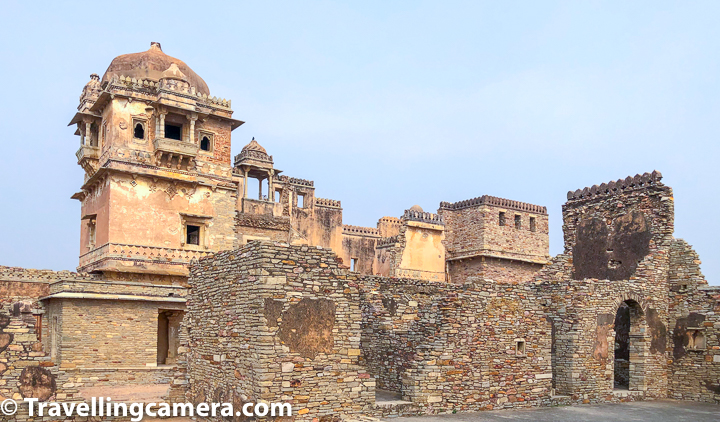
You can have a guide at Chittor Fort for approx 650 Rs for whole tour. Guide takes you to different places during your exploration at Chittor Fort. Our Guide was pretty good and Manish is reachable at 9783246246. Recommended if you are visiting Chittor Fort and intend to accompany a guide. If you explore Chittor with Manish, please leave your comments below with experience and let us know if you would want to recommend him to others from Travellingcamera family?
Our guide, Manish took us to Rana Kumbha Palace first and gave us a quick tour of this grand palace of Rana Kumbha. Most of it is in ruins and we will learn about why it's in current shape.
The palace was rebuilt by Maharana Kumbha on a ruined palace which was built in the 734 AD by Bappa Rawal. He was known for his art and cultural patronages in Rajasthan's Mewar dynasty. It is in this palace the Rajput King Maharana Kumbha lived his royal life. The ruined Kumbha Palace is the most massive monument in the fort of Chittor.
Rana Kumbha Palace is one the main places to visit inside Chittor Fort and a fine example of Rajput architecture. The palace is a huge structure which is built of sandstone of uneven proportions. The Rana Kumbha palace of Chittorgarh is raised high from a large basement which is in the shape of a rectangle. One of the special things about Rana Kumbha palace is its splendid series of canopied balconies. The entrance to the palace is through two gateways known as Suraj Pol and Tripolia Gate leading further to Suraj Gokhra, Zanana Mahal and Kanwarpada-ka-Mahal in the open courtyard.
The Rana Kumbha Palace is closeby following key places to visit inside Chittor Fort :
- Panna Dhai temple
- Meerabai temple
- Lord Shiva Temple
- The Nau Lakha Bandar (nine lakh treasury) building (The royal treasury of Chittor)
- Museum
- Archeological office
- The Singa Chowri temple
- Vijaya Stambha

Rana Kumbha was born in a Hindu Rajput family of Sisodia clan. Rana Kumbha was a son of Rana Mokal Singh of Mewar and his wife Sobhagya Devi. He was the 48th Rana of Mewar and succeeded Rana Mokal Singh in the year 1433 CE as the ruler of Mewar, but most of the stories you hear in Mewar region start with him and his successors.
Chittor fort has several historical palaces, gates, water tanks, temples and two prominent towers with some unique features. Rana Kumbha Palace is very first place you hit after taking entry ticket for the fort.
As you enter into the Rana Kumbha Palace of Chittor Fort, you see above structure on your left. This is horse stable to keep horses which were used for royal family members.
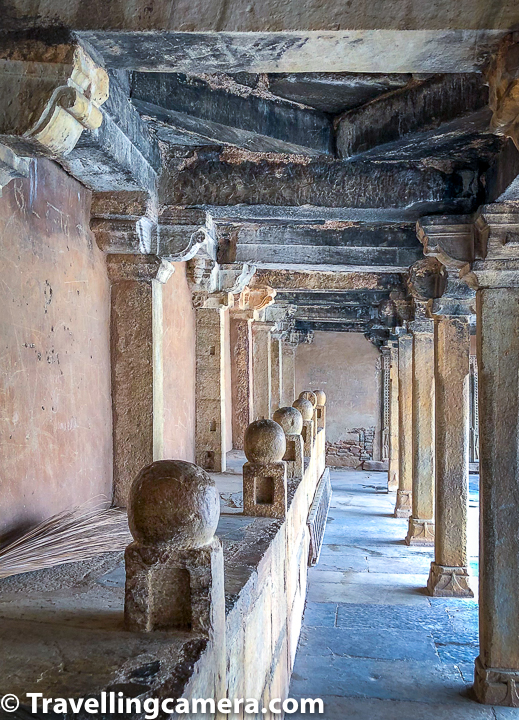
The ruins of Rana Kumbha palace have the temple of Lord Shiva, Zanana mahal, Diwan-e -aam, along with a stable for horses we just showed in above photograph. According to the legends, the founder of the city of Udaipur, Maharana Udai Singh was born in Rana Kumbha Palace and his life was saved by his wet nurse Panna Dai, who hid him inside a fruit basket when she sensed that his life is in danger due to ongoing politics inside the Palace.
Rana Kumbha place was once the home of the famous bhakti poetess Meerabai. It is also believed, that Rani Padmini organized her self- immolation or jauhar inside this fort. We shall share these stories in detail when we share about the famous Meerabai temple inside Chittor Fort and Padmini palace along with the water body.
The Chittor fort is build with stones which are plastered and have some exquisitely design canopied balconies.

Above photograph shows the outside view of Rana Kumbha Palace at Chittor Fort and this is a view from main road which connects this palace with entry gate of the fort.
The Chittor Fort is the largest fort in India and is a UNESCO World Heritage Site, which is located on a huge hill with plains all around the fort. This geographical advantage makes this fort very special in Rajasthan as well as India.
All photographs in this blogpost are clicked with Mobile camera inside Rana Kumbha Palace. We shall other important monuments of Chittor Fort in separate posts and at the end, we will share a combined blogpost focussing on Chittor Fort - how to reach, where to stay, how to plan time inside Chittor fort, things to skip or to be aware about.
Meerabai Temple in Chittor Fort, Rajasthan :

One place which has very unusual stories associated with it inside Chittor Fort is Kumbha Shyam Temple which is also known as temple dedicated to Meerabai. While exploring Chittor Fort, one can park the car close to this temple and take a round. This compound has a huge temple which is dedicated to Meerabai and another one is for her guru.
There is no specific entry ticket for Meerbai temple and you get entry as well as parking on ticket main ticket for Chittor Fort. Timings of temple are also same as that of other places inside Chittor fort : 9:45am till 6pm.
In 1516 Crown Prince Bhoj, who was son of Maharana Sangram Singh-I married the princess Meera Bai of Merta. It seems when Meera came to Chittor, she requested for a small Krishna Temple for her personal use. Her father-in-law, Maharana Samgram Singh-1 built this Temple adjoining Kumbh Temple, which was named as Kumbha Shyam Temple. Meera continued her devotions to Lord Krishna and used her wealth to help feed religious pilgrims and the needy, around this part.
Above photograph is clicked from left side of entry gate of the temple. There are lot of Langoors around the temple, so please ensure that you are not carrying eatables with you and be aware of other stuff you have while walking around the temple.
Above photograph shows a small temple on the left and a small Chhatri in the Temple built in memory of Meera's saintly guru Swami Ravidas of Varanasi. The saint's footprints are marked on the floor of this small shrine.
You can spend lot of time exploring these sculptures around the temple and not only the temple but whole Chittor Fort is full of these, although many of them got destroyed over decades.
This temple is built in Indo Aryan style and has a flavour of Rajput Architecture. The temple has a unique pyramid like roof with a high tower. The temple is placed on an elevated platform. The sculptures of various Hindu Gods and Goddesses be seen inside the temple. Similar sculptures can be seen on outer walls of the temple. There are sculptures of 8 rulers of the land on the walls of Kumbha Shyam temple. The image of Garuda stands under the canopy facing the temple.
We certainly recommend to take a stop at Meera temple when exploring Chittor Fort in Rajasthan.
Vijay Stambha and it's wonderful architecture in Chittor Fort, Rajasthan :
When you are out in Chittor Fort for exploration, you head towards the famous Vijay Stambha after visiting Rana Kumbha Palace. Vijay Stambha is one of the most special monument which helps many reconnect with Chittor Fort. The Vijaya Stambha is a victory monument located within Chittor Fort in Chittorgarh, Rajasthan India.
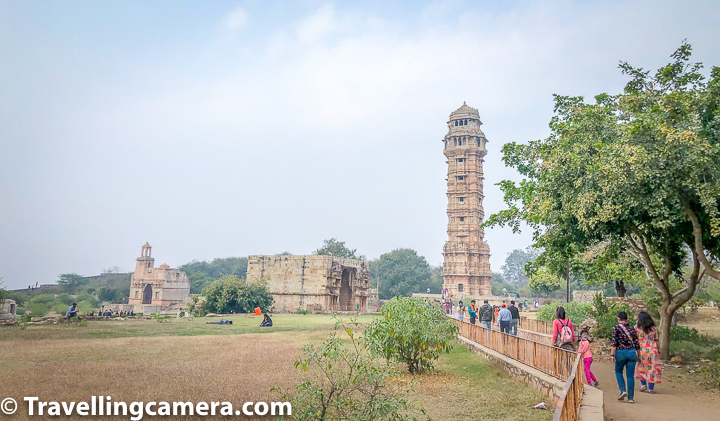
After parking your car, you walk through an entry gate where your ticket is checked. There is no special ticket for Vijaya Stambha and the entry ticket for Chittor fort works here as well. Above photograph shows the view of Vijaya Stambha just after entering through the gate. There is a small walk from gate till the tower and more structures come on the way.
There is no special entry fees for Vijay Stambha or Shiva temple. There is only one entry ticket for whole Chittor fort and everything inside the fort is part of that. Entry ticket for Chittor Fort costs you 40rs per adult, while online ticket cost is 35 rs. There is no extra cost for vehicle and best part is that you can take your vehicle inside. Going in a vehicle is must as it's huge and vehicles makes it easy to move between the places of Chittor Fort. We were there during pandemic so comparatively it was less crowded. I can imagine that during peak tourist season, the fort must be crowded and there is a possibility of traffic jam within the fort.
As you can see in above photograph, the Vijaya Stambha ( Victory Tower ) is pretty high and one of the most interesting structures inside Chittor Fort of Rajasthan.
While exploring Vijaya Stambha or Chittor Fort, you will encounter lot of langoors all around. They usually don't disturb you unless they feel threatened. Having said that, please be careful and be aware of your surroundings. Try not to carry stuff to eat in your hands, as that can be tempting for them to pay attention to you :). Above photograph is clicked around entry gate for Vijaya Stambha in Chittor Fort. All photographs in this blogpost are clicked with phone camera.
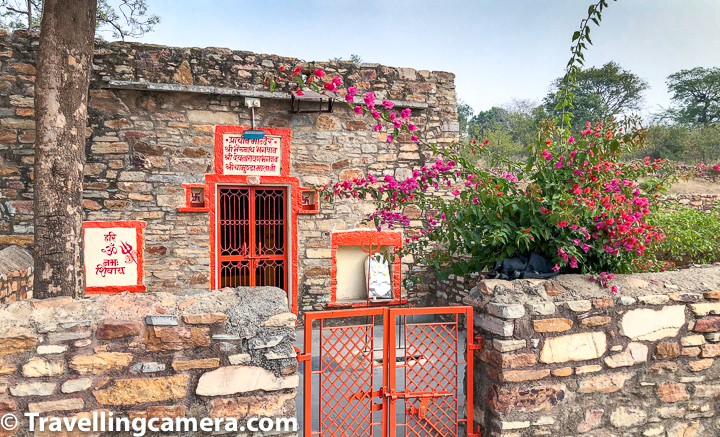
Archeological Survey of India is still doing excavations around this part of Chittor fort as lot of temple ruins and sculptures are found in this part of the Chittor Fort. Surroundings of Chittor Fort also has huge area which is considered as the place where thousands of women of Chittor fort did johar. According to our guide Manish, that used to a way for women to ensure that king is not under pressure because of safety of women inside the fort, specially when any war becomes tricky and very competitive. I am sure there is more to all that, but we shall cover that in separate blogpost after little more research.
Vijaya Stambha, a beautiful tower was constructed by the Mewar king, Rana Kumbha, in 1448 to commemorate his victory over the combined armies of Malwa and Gujarat led by Mahmud Khilji. The tower is dedicated to Vishnu. Our Guide Manish also mentioned that each floor of the tower has symbols from different religions in the world and that has also saved this tower till date. Supposedly the fort and various parts of the fort were destructed but Vijaya Stambha was not touched. The Vijaya Stambha is a remarkable example of religious pluralism practised by the Rajputs. The topmost storey features an image of the Jain Goddess, Padmavati. Just look at above photograph again to appreciate carvings on Vijaya Stambha and it's full of these from bottom till top.
The inscribed slabs in the uppermost storey containing a detailed genealogy of the rulers of Chittaur and their deeds are ascribed to Ran Kumbha court scholar, Atri and his son Mahesh. The names of the architect, Sutradhar Jaita and his three sons who assisted him, Napa, Puja, and Poma are also carved on the fifth floor of the tower.

Vijaya Stambha compound also has that popular Shiva temple which is also shown in Bollywood movie Padmawat. This Shiva temple is still active and queen of the Chittor used to visit Shiva temple everyday after taking bath in nearby water tank. This Water tank is visible from Shiva temple boundary. This place also offers panoramic views of Chittor town in the valley.
One can plan a day trip from Udaipur to Chittor Fort. Chittorgarh from Udaipur is approx 120 km which takes 2 hrs one side. Please note that day trip means 2 hrs of drive, so personally I would recommend staying around Chittorgarh and give at least full day to Chittor Fort as there is so much to explore and photograph. There can multiple factors to consider as per individual choice to decide day trip to Chittor from Udaipur or stay around the fort.
Vijaya Stambha has 9 stories accessed through a narrow circular staircase of 157 steps up till 8th floor, from where there is good view of the plains and the new town of Chittor. Since we visited during pandemic, we were not allowed to climb up otherwise these stairs are open for tourists. The dome of Vijaya Stambha in Chittor Fort was a later addition, was damaged by lightning and repaired during the 19th century. The Vijay Stamba is now illuminated during the evenings and gives a beautiful view of Chittor from the top.

This Tower of Victory or Jaya Stambha, called the symbol of Chittor and a particularly bold expression of triumph to celebrate Rana Kumbha's victory over Mahmud Shah I Khalji, the Sultan of Malwa. Vijay Stambha was supposedly built over a period of 10 years and it's approx 37 metres high, over a 47 square feet base. Vijaya Stambha has been one of the most special monument for me to explore in Chittor Fort, although I wish to go again and climb up those circular stairs inside it.

Samadhishvara Temple with 3 faces of Shiva - A brilliant piece of Architecture built in 11th century inside Chittor fort of Royal Rajasthan :
While exploring Largest Fort of India in Chittorgarh, we also visited this beautiful temple located close to Vijaya Stambha of Chittor Fort. So far we have shared about Rana Kumbha Palace and Victory Towers of Chittor Fort.
We were visiting Chittor Fort from Udaipur, which is approx 2 hrs drive one way. The Samadhishvara Temple is a Hindu temple inside Chittor Fort of Rajasthan, India which is also featured in popular bollywood movie Padmavat. This temple is very close to Victory tower and holy water tank. Temple is dedicated to lord Shiva who is also called "Samadhishvara" which means "Lord of Samadhi".

Above photograph shows The water reservoir close to the Shiva temple of Chittor which is known as Gaumukha Tirthasthala. If you remember we had shared about this reservoir, temple and zanana mahal in Rana Kumbha Palace blogpost.
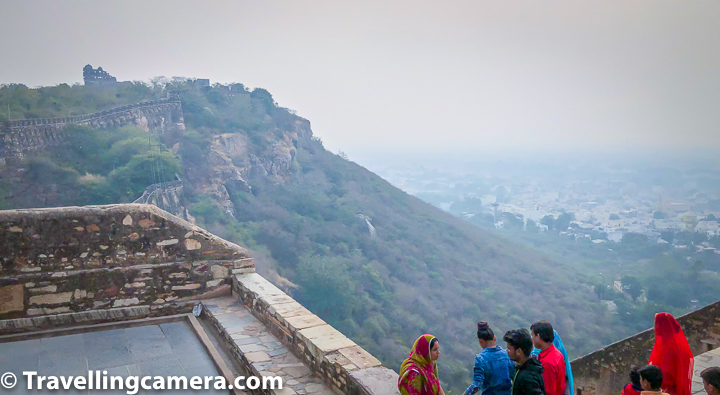
Above photograph shows the view of Chittorgarh town from Shiva Temple. This place offers great panoramic view of the town and water reservoir.
There is a very interesting thing about the architecture of Shiva temple inside Chittor Fort that it was built/restored over a period of five centuries (11th-15th century). And that's the reason that it has varied sculptural styles.
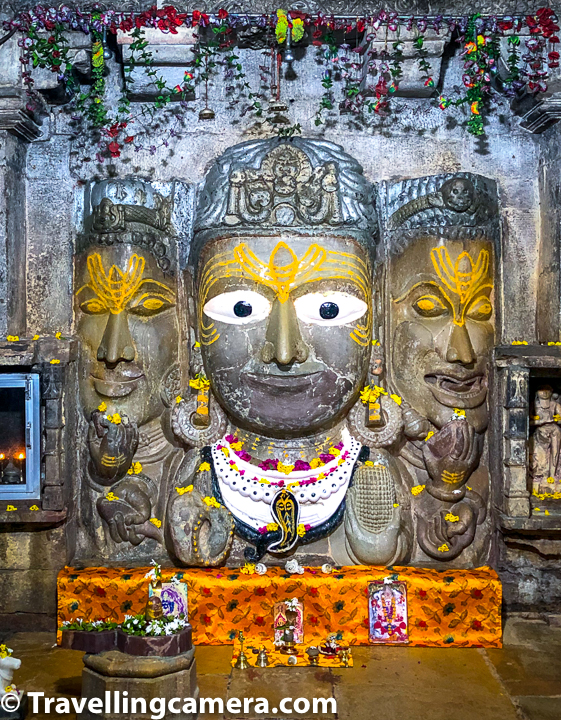
The sanctum of the temple contains an image of Shiva. The image depicts Shiva as having three heads and all of them are shown wearing jata-mukutas. Each of the three faces of Shiva idol has a third eye and the face on right bears a terrifying expression. Centre and the left faces of Shiva idol show peaceful expression.

Above photograph shows designs on the outer part of Shiva temple in Chittor Fort. On outer side of the temple has some beautiful designs and sculptures showcasing :
- Animal Hunting
- Royal Battles
- Royal processions and courts
- Religious themes like worship of stupas, lingas, jinas, and other deities
- Other scenes from common life, such as bullock-carts, camel-carts, and artisans at work
In current times, locals call the temple diety "Adbhut-ji" or "Adbad-ji", which is a name also used for the deity of a 15th-century Shiva temple near Surajpole. Three faced Shiva inside the temple may have lead to this name.
As per Archeological Survey of India (as narrated by local guides of Chittor Fort), this Shiva temple was constructed in the 11th century and was further restored in the 13th and the 15th centuries.
There is a pavillion of Nandi in front of the Shiva Temple and this is the place from where you can see the water tank on your right (when you stand near the pavilion and look facing towards the Shiva temple)

Gaumukh Reservoir inside Chittor Fort, Rajasthan :
Above photograph is clicked from Shiva Temple of Chittor Fort and you can see the water tank. If you have checked the blogpost about Rana Kumbha Palace, this water tank is connected with that palace through a cave which was in use by queen and her ladies during morning. Queen used to take bath here, pray at Shiva temple and then start the daily routine. This water tank is still used for some religious activities by locals.
Above photograph shows people enjoying panoramic views of the Chittorgarh from Shiva temple in Vijaya Stambha compound in Chittor Fort.
Padmini Palace inside Chittor Fort, Rajasthan :
During our visit to Chittor Fort in Rajasthan, we came across different narrations of Rani Padmavati. That made me realised that why there were so many controversies during the release of bollywood movie Padmavati which was later renamed to 'Padmavat'.
Rani Padmini was wife of Maharana Rattan Singh of Mewar. Tourists from all over the world visit Chittor fort to explore the grand historic monuments and hear stories of adventure as well as sacrifice of the Rajputs of the Mewar Kingdom. The Padmini Palace is where the Rajput women sacrificed their lives when the palace was attached by Alauddin Khilji. Modern narration by local guides depict it as loyalty and strength to fight or die instead of facing dishonour. When compared to other palaces of Chittor fort, the Padmini Palace is smaller but is considered to be an attractive due to tragic story associated with end of Rani Padmini.
Above photograph shows this three storied white building, which is located in the southern part of the fort. Padmini Palace is surrounded by water bodies and there is a huge palace compound on other side of this water body. It seems Padmini used to use a boat to come to main palace from her palace surrounded by water body.
Padimini Palace which is surrounded by water body is the place where Alauddin was permitted to see the mirror image of Rani Padmini. It is widely believed that Alauddin was obsessed by the beauty of Rani Padmini, even by looking briefly at the mirror. That triggered Allaudin to have a desire to win Rani Padmini and he got convinced to destroy Chittor. In the battle, Maharana Rattan Singh was killed and Rani Padmini committed Jauhar.
When our guide at Chittor was narrating the story of Rani Padmavati, he shared about her roots in Shrilanka but it seems that's debated till date. In his narration, he glamourised Jauhar and also shared other stories when thousands of ladies of Chittor did Jauhar. There is a huge jauhar area close to the famous Shiva Temple and Vijay Stambha of Chittor Fort.
These old doors tell a lot about the space and Travellingcamera was so happy to see these doors still being used after regular maintenance. ASI certainly does a great job at maintaining these heritage buildings by ensuring that you feel that old place in modern times.
As you go to the back side of main Palace in Chittor, you see a huge water tank which was dry. Seems like, the water body around Padmini Palace used to be huge which shrunk over the decades.
Above photograph shows the green area which is just after the main entry gate at Padmini Palace in Chittor Fort.
It's not related to Padmini palace but about the guides who show around Chittor Fort and some of the great heritage of this place. It's very clear that guides here take pride being part of Mewar and that can also mean that story narration can be little biased. During my trip to Rajasthan this time, I felt that lot of the stories narrated by guides in Udaipur area show respect to Mewar dynasty. Every win or loss is narrated to express glory of Mewar. Because of the same reason, I am not very confident in sharing lot of those stories on this blog. There is lot of literature available and I don't feel like putting anything which can be misleading or not true. Having said that, we welcome you to share your understanding of Chittor Fort or Padmini Palace through comments section below.

Kirti Stambha inside Chittor Fort, Rajasthan :
Kiriti Stambha is bang on the road when you are driving inside Chittor Fort of Rajasthan. Kirti Stambha (Tower of Fame) is a 22 metres high tower built on a 30 feet base with 15 feet at the top. Kirti Stambha has Jain sculptures on the outside and is older as well as smaller than the Victory Tower. Kirti Stambha was built by the Bagherwal Jain merchant Jijaji Rathod, it is dedicated to Adinath, the first Jain tirthankar. There is a narrow stairway with 54 steps leads through the six storeys to the top of Kirti Stambha. The top pavilion that was added in the 15th century has 12 columns.
If you liked this post and found it helpful, I would request you to follow these things when traveling -
1. Manage your waste well and don’t litter Use dustbins.
2. Tell us if you went to a place and found it hard to locate a dustbin.
3. Avoid bottle waters in hills. Usually you get clean water in hills and water bottles create lot of mess in our ecosystem.
4. Say big no to plastic and avoid those unhealthy snacks packed in plastic bags. Rather buy fruits.
5. Don't play loud blaring music in forests of jungle camps. You are a guest in that ecosystem and disturbing the locals (humans and animals) is not polite.



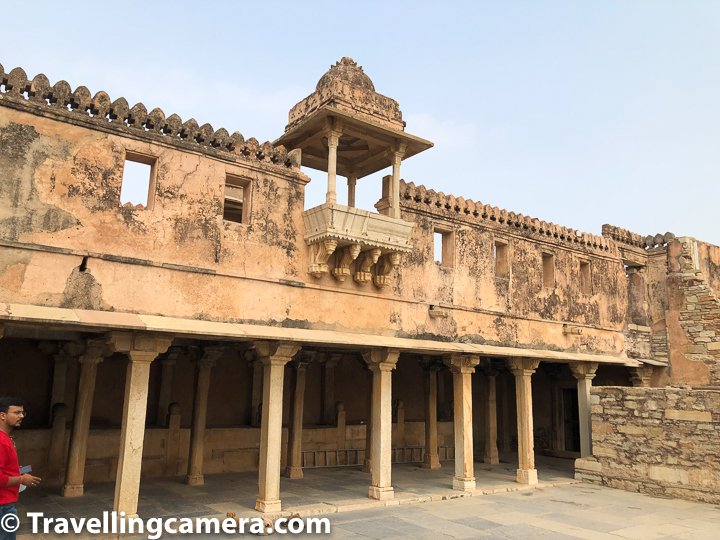
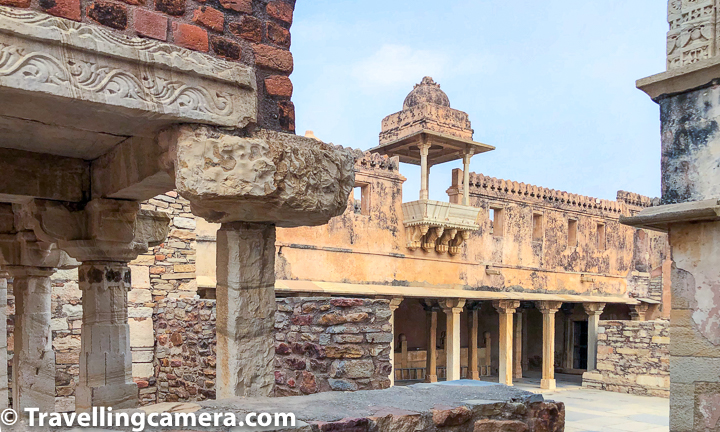







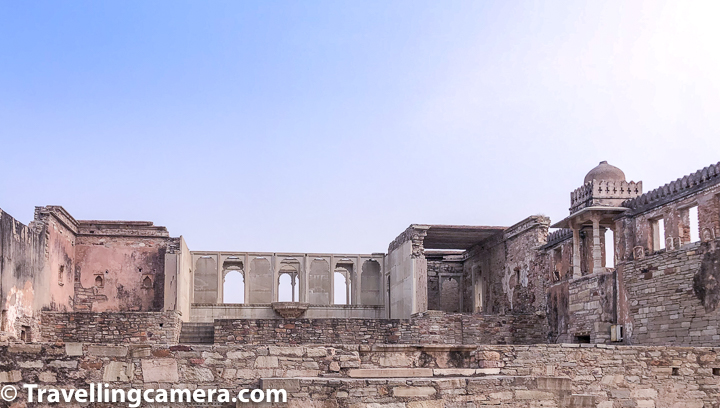

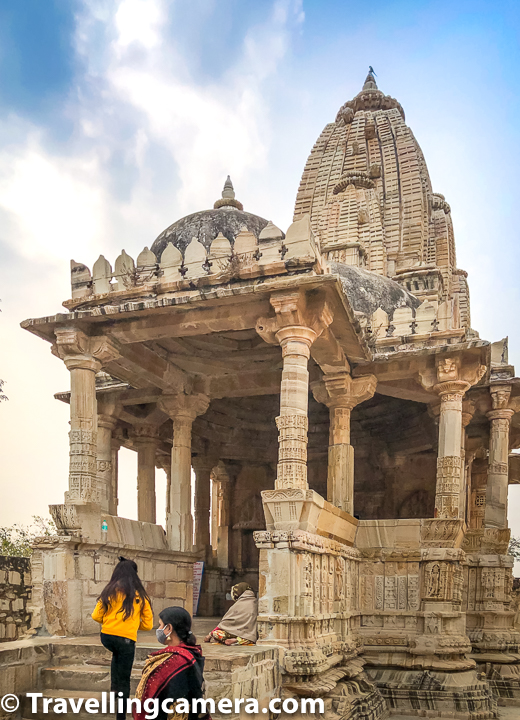
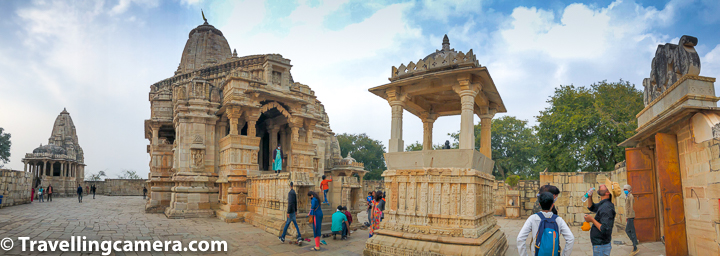
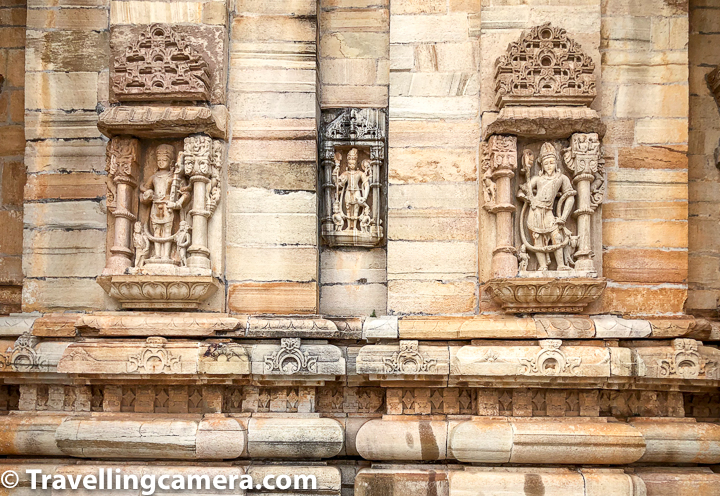
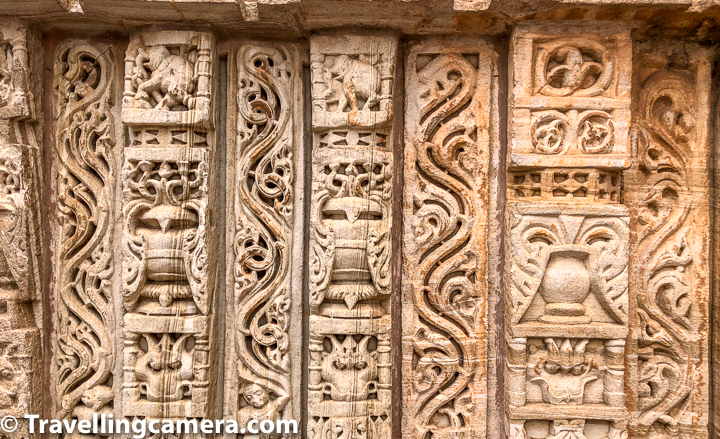














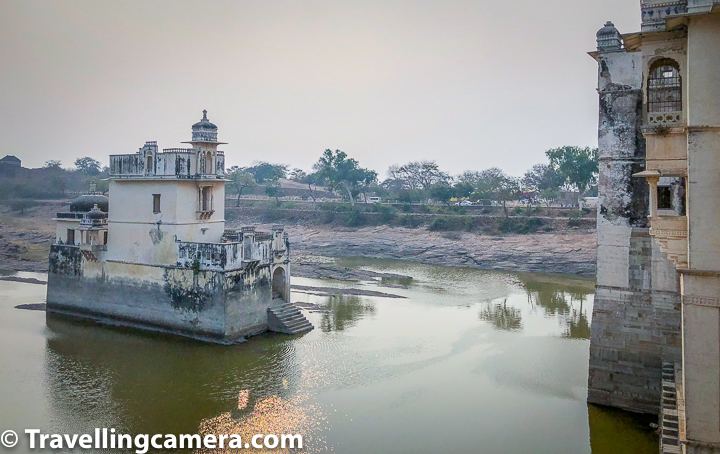







.jpg)
Comments